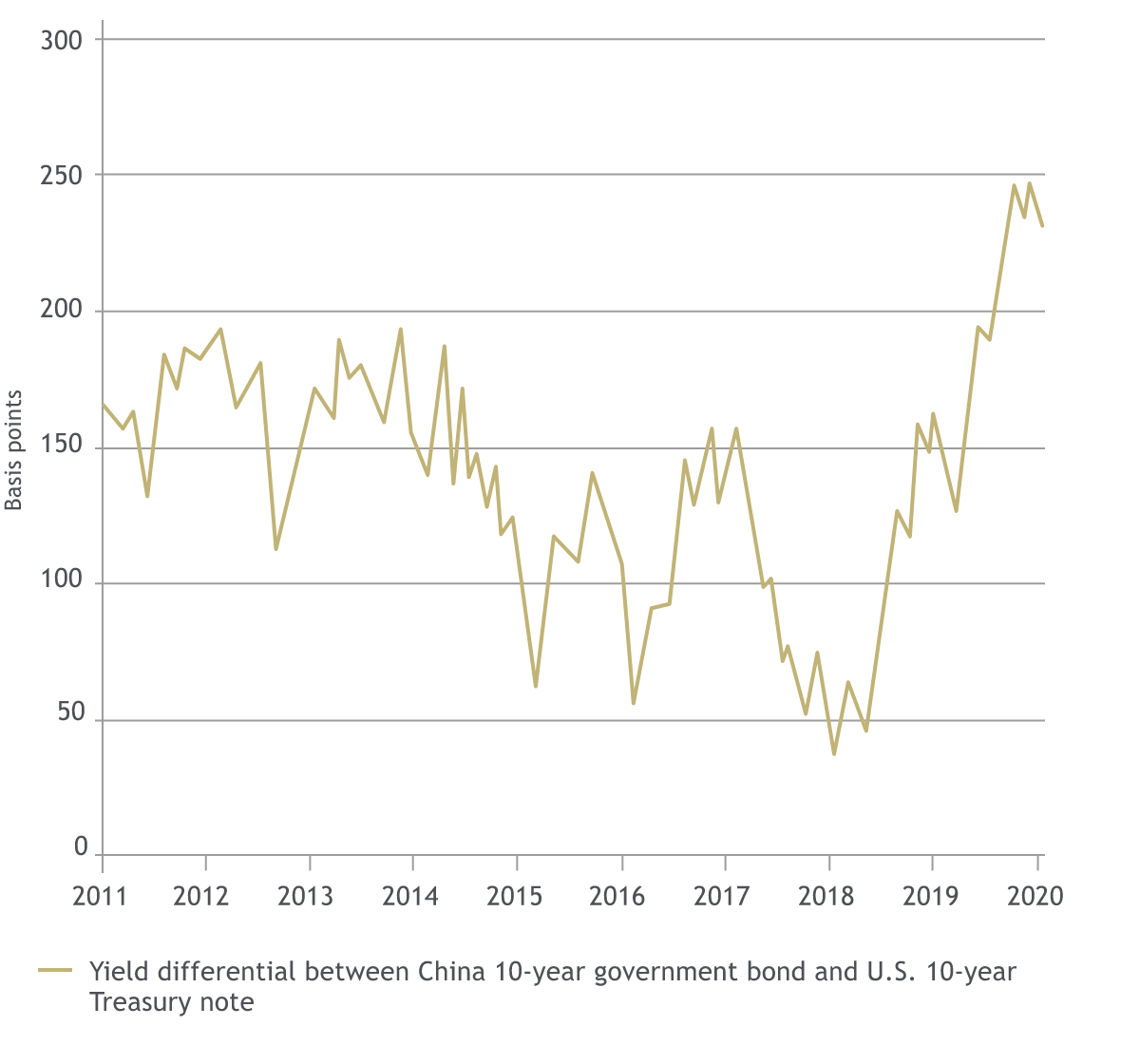The index inclusion is expected to commence in October 2021 and will be phased-in over 12 months. The commencement date is subjected to final affirmation in March 2021. After full inclusion, it is estimated that China’s weight
could reach up to 5.7% of the overall index. It will also represent the sixth largest market in the index, following the U.S. (33.8%), Japan (16.7%), France (8.2%), Italy (7.3%) and Germany (6.0%). The Chinese bond market has
grown tremendously over the years, as inflows from abroad have jumped nearly 40% per annum since 2017. The organic growth of China’s bond market, coupled with the impending inclusions, mean that foreign investors cannot afford
to ignore China’s bond market for much longer. Foreign ownership of Chinese government bonds currently stands at 3% (as at end August 2020), substantially below levels seen in Japan (20%) and the U.S. (40%).
The inclusion will strengthen China’s foothold among international investors. It is estimated that index-related flows will account for approximately USD 140 billion over the phase-in period. This will be a major game changer
for a market that has seen limited foreign participation despite having grown to become the second largest bond market in the world.



